Anubias barteri
Scientific name: Anubias barteri
Family: Araceae
Maximum size reached under cultivation: 25 - 40 cm (9.84 - 15.75 inch)
014
Recommended pH range: 6 - 7.5
Recommended water hardness: 4 - 18°dGH (71.43 - 321.43ppm)
0°C 32°F30°C 86°F
Recommended temperature range: 20 - 30 °C (68 - 86°F)
Preferred propagation method: Rhizome
Native to: Africa
Growth rate: Slow
Recommended substrate: Fine gravel
Lighting requirements: Medium
Ideal placement in tank: Midground
🌍 Origin
Anubias barteri comes from the tropical freshwater regions of West Africa, including countries like Cameroon, Nigeria, and Ghana. It thrives along riverbanks, streams, and wetlands, growing either fully submerged or partially emerged in slow-moving or stagnant waters. Its hardiness and tolerance make it a favorite in both aquariums and paludariums.
🐌 Growth Rate
This species is extremely slow-growing. Under good conditions, it may develop a new leaf every 2–3 months. While this may seem slow for aquascapers seeking fast results, it makes Anubias barteri ideal for low-maintenance aquariums where trimming and replanting are kept to a minimum.
🏞️ Planting Area
Anubias barteri can be used in the midground or background depending on the size of the tank. It performs best when attached to hardscape such as rocks or driftwood. Do not bury the rhizome in substrate—this may cause rot. Instead, tie or glue the plant in place and let it anchor naturally over time.
💡 Lighting Requirements
Anubias barteri tolerates a wide range of light levels, from low to moderate. It grows slowly regardless of light intensity, but higher light may promote richer color. To avoid algae buildup, avoid direct or excessive lighting and place the plant in partially shaded zones when possible.
🌱 Propagation
This plant is easy to propagate via rhizome division. Use clean scissors to cut the rhizome into sections, each with several leaves. Attach each section to rock or wood using fishing line or plant-safe glue. Over time, the plant will root and expand. Its simplicity makes it a great choice for both novice and experienced aquarists.
🧑🌾 Difficulty
Anubias barteri is one of the most beginner-friendly aquatic plants. It handles a broad spectrum of pH values, temperatures, and water hardness. It also tolerates low nutrient and light levels, making it ideal for low-tech aquariums.
🌿 Short Description
With its thick, leathery green leaves, Anubias barteri adds long-lasting structure and color to any aquascape. It is suitable for a wide range of setups—from fully submerged aquariums to paludariums. The plant resists nibbling from herbivorous fish and remains attractive over time, even in lower-maintenance conditions.
❓ FAQ – Anubias barteri
- Can Anubias barteri grow without substrate?
- ✅ Yes. It grows from a rhizome and prefers to be attached to rocks, driftwood, or decorations. Burying the rhizome may lead to rot.
- Is this plant good for beginners?
- 🧑🎓 Absolutely. It’s one of the easiest aquatic plants to care for. It tolerates wide water parameters and minimal lighting, making it ideal for beginner tanks.
- How often should I trim it?
- ✂️ Rarely. Due to its slow growth rate, trimming is only needed occasionally—perhaps once every few months to remove old or damaged leaves.
- Can it grow under low light?
- 💡 Yes. Anubias barteri does well in low-light aquariums. Just avoid deep shade or completely unlit corners to prevent decline.
- Is CO2 required?
- 💨 No. While CO2 can improve growth slightly, it is not necessary. This plant thrives in low-tech, non-CO2 setups as well.
- Does it attract algae?
- 🌱 Sometimes. Due to its slow growth and broad leaves, algae may settle on the surface if exposed to intense light. Partial shade helps prevent this.

 Aglaonema commutatum “Silver Queen”
Aglaonema commutatum “Silver Queen”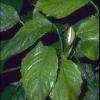 Aglaonema simplex
Aglaonema simplex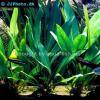 Anubias afzelii
Anubias afzelii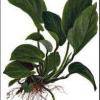 Anubias barteri “Caladiifolia” ‘1705’
Anubias barteri “Caladiifolia” ‘1705’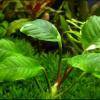 Anubias barteri “Coffeefolia”
Anubias barteri “Coffeefolia”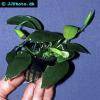 Anubias barteri “Nana”
Anubias barteri “Nana”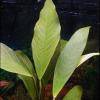 Anubias barteri v. angustifolia
Anubias barteri v. angustifolia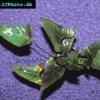 Anubias gracilis
Anubias gracilis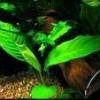 Anubias heterophylla
Anubias heterophylla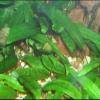 Cryptocoryne affinis
Cryptocoryne affinis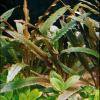 Cryptocoryne albida
Cryptocoryne albida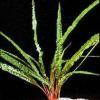 Cryptocoryne balansae
Cryptocoryne balansae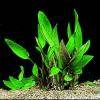 Cryptocoryne becketti
Cryptocoryne becketti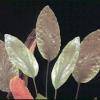 Cryptocoryne blassi
Cryptocoryne blassi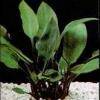 Cryptocoryne ciliata
Cryptocoryne ciliata Cryptocoryne cordata
Cryptocoryne cordata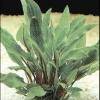 Cryptocoryne lutea
Cryptocoryne lutea Cryptocoryne nevillii
Cryptocoryne nevillii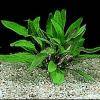 Cryptocoryne petchii
Cryptocoryne petchii Cryptocoryne pontederiifolia
Cryptocoryne pontederiifolia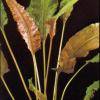 Cryptocoryne wendtii
Cryptocoryne wendtii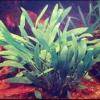 Cryptocoryne willisii
Cryptocoryne willisii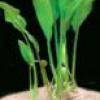 Lagenandra ovata
Lagenandra ovata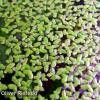 Lemna minor
Lemna minor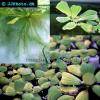 Pistia stratiotes
Pistia stratiotes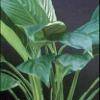 Spathiphyllum petite
Spathiphyllum petite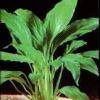 Spathiphyllum wallisii
Spathiphyllum wallisii